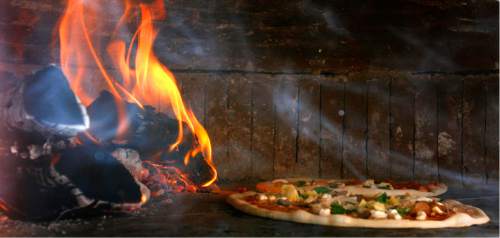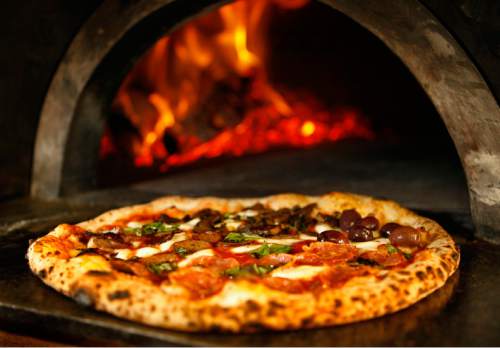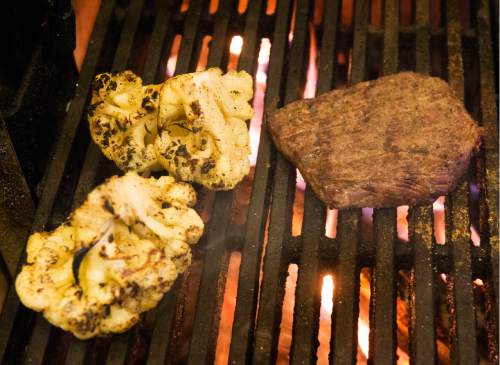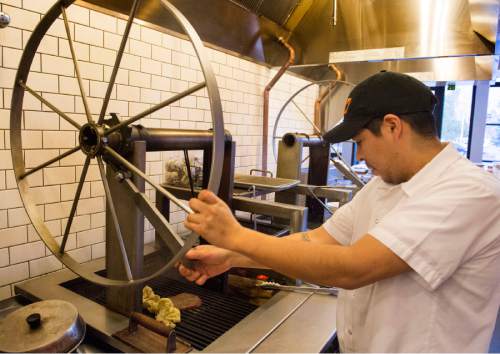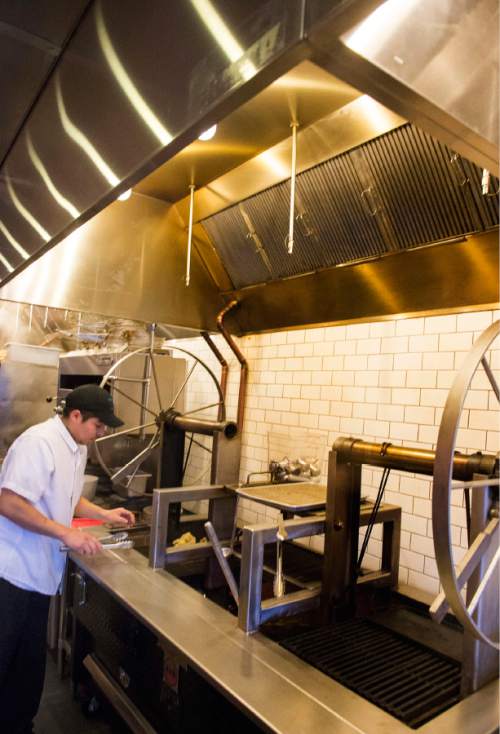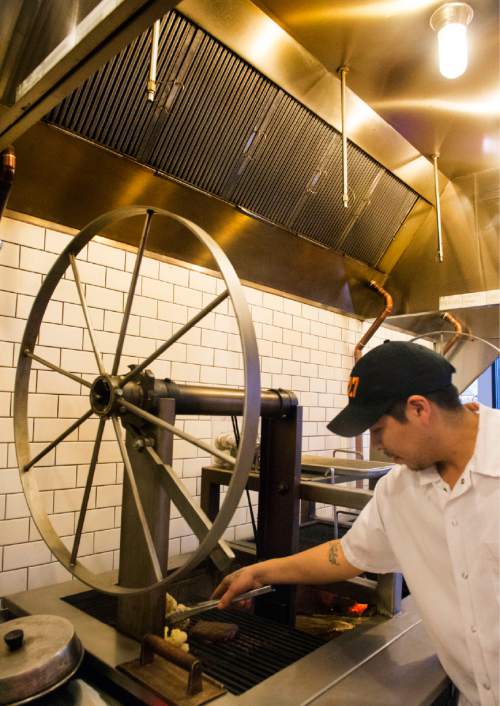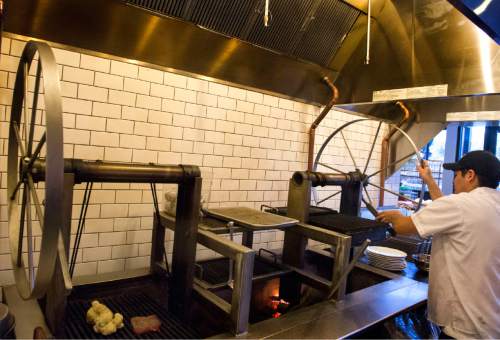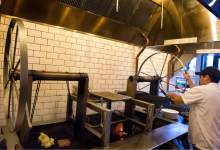This is an archived article that was published on sltrib.com in 2014, and information in the article may be outdated. It is provided only for personal research purposes and may not be reprinted.
A new restaurant in Holladay is grilling meat and vegetables over a wood fire, but according to Copper Kitchen owner Ryan Lowder, its emissions are among the cleanest of any Salt Lake Valley restaurant.
His 72-inch grill burns locally sourced mesquite charcoal, walnut and apple wood. How else would you impart fruity, nutty taste into a slow-roasted head of cabbage?
"It's for the flavor aspect and having a fire in our dining room," Lowder said.
Hanging over the grill, which weighs as much as two Volkswagen buses, is an $80,000 "smart" hood equipped with special filters that require twice-daily cleaning.
Whether or not Lowder installed a state-of-art air filtering system, his restaurant will be exempted from the state's new Wasatch Front wood burning restrictions. On Wednesday, the Utah Air Quality Board expanded restrictions on residential burning to include institutions and businesses. But restaurants are excluded from the new ban, as are ski lodges and other establishments above 7,000 feet elevation.
Clean air activists aren't pleased the Division of Air Quality (DAQ) isn't putting more pressure on wood-burning restaurants, but many understand they warrant some consideration.
"I don't think they deserve a full-on pass to burn wood in the name of having a restaurant," said Ingrid Griffee, executive director of Utah Moms for Clean Air. "It's important that they have the best technology available to keep their emissions clean. It would be wonderful if during inversion season they could switch from wood to gas."
Summit County, with its concentration of restaurants in Park City, is not included in the wood-burning regulations because it lies outside the urban core plagued with winter inversions. The "non-attainment" zone for fine particulate pollution stretches along the Wasatch Front from Santaquin to Idaho, and includes the Cache Valley.
Close to 80 restaurants operate in the area, most of them in Salt Lake County, according to DAQ documents. They include barbecue joints, tandoori grills and, of course, pizza ovens.
Settebello Pizzeria's baking vessel is a case in point.
Crafted with ceramic materials extracted from Italy's Campania coast, the bell-shaped oven features a floor crafted with "Biscotto di Sorrento" and bricks hand-pressed in Salerno. Holding the bricks together is volcanic sand from Mount Vesuvius, the volcano that encased Pompeii in ash 2,000 years ago, according to the restaurant's web site.
Wood and only wood may ever be used to heat the oven, lest Settebello's pizza lose its coveted certification as authentic Neapolitan fare, prepared with scrupulous adherence to a tradition that predates the Industrial Revolution.
Settebello owner Michael Brooks did not call The Tribune after several emailed requests for comment.
Since Settebello opened in downtown and Farmington, wood-fired pizzerias have boomed along the Wasatch Front. But there are no cost-effective ways to capture smoke and other fine particulates from ovens and grills found in typical table-service restaurants, air quality monitors say.
"If you are using wood or charcoal, you should have a filter. That's a no-brainer," said Lowder.
But filtration has inherent limits, according to Mike Morgan of CaptiveAire, the manufacturer that equipped Copper Kitchen.
Even the high-tech self-cleaning hood installed in Lowder's new restaurant can only remove particles as small as three microns, which is larger than the fine particulate pollution that contributes to Utah's wintertime inversions. So the smallest particles still get through.
"We are removing significantly more grease particles," Morgan said. "You are still going to have the vapors and smoke, but it's much better than a plain-Jane hood."
California regulators are pushing the restaurant ventilation industry to develop equipment that captures nearly all particles under one micron in diameter. CaptiveAire makes roof-mounted pollution-control units, but they still cannot achieve a total elimination of fine particulate matter and volatile organic compounds.
"Industry is begging for an answer and there are technologies out there that help. They remove a good amount, but it's not going to be absolute," Morgan said. "California has been working on this for 15 years and they are still working on it."


